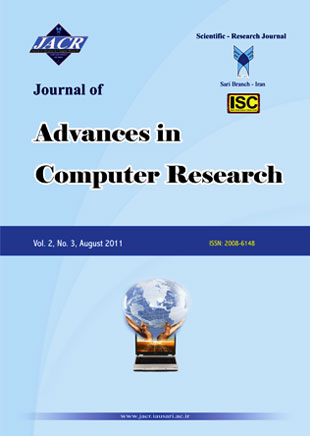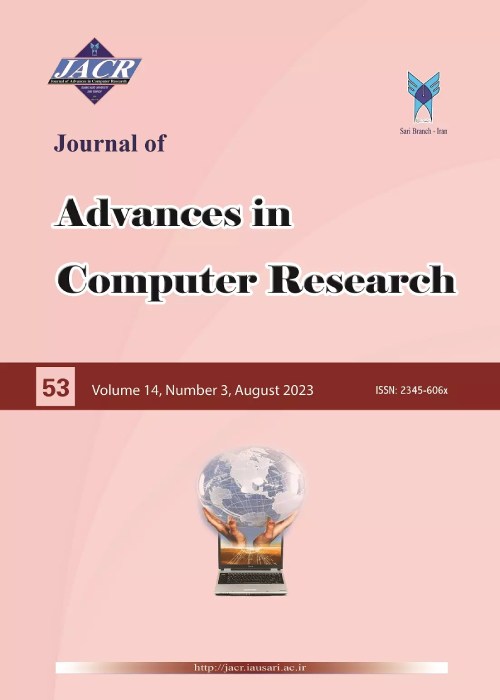فهرست مطالب

Journal of Advances in Computer Research
Volume:2 Issue: 3, Summer 2011
- تاریخ انتشار: 1391/03/03
- تعداد عناوین: 8
-
Page 1Requirements engineering (RE) is often seen as an essential facet in software development. It is a vital process before each project starts. In the context of systems engineering, an understanding and application of systems theory and practice is also relevant to RE. The contexts in which RE takes place habitually involve human activities. Therefore, RE needs to be sensitive to how people perceive and understand the world around them, how they interact, and how the sociology of the workplace affects their actions. This paper will propose a new approach in requirements elicitation process by considering the human intervention in each activity involve with the development process. Web application development requires proper elicitation process because it has its own distinctive features. Without proper elicitation process, the requirements will turn to be inaccurate and incomplete thus will increase the ambiguity. Therefore, this paper will examine the role of the activity theory in order to decrease the impact of the said problems or to avoid them. Some analysis will be made over the theory in order to discover its sustainability in promoting and maintaining the quality of the requirements, with the aim to underline better way of eliciting the requirements for the Web application.
-
Page 15Supervised clustering is a data mining technique that assigns a set of data to predefined classes by analyzing dataset attributes. It is considered as an important technique for information retrieval, management, and mining in information systems. Since customer satisfaction is the main goal of organizations in modern society, to meet the requirements, 137 call center of Tehran city council is planning to reduce the waiting time of customers, forwarding their messages to the appropriate service manager to increase service quality. The city council is currently using a manual approach dispatching textual request messages. Since this process is very similar to supervised clustering concept, in this study, we applied the Naïve Bayes algorithm, which is one of the most common algorithms in the supervised clustering arena to classify received messages regarding their subjects. The performance results of the proposed technique indicate its high efficiency in clustering the received messages with 98% accuracy.
-
Page 25Routing in Wireless Sensor Networks (WSNs) is a very challenging task due to the large number of nodes, their mobility and lack of proper infrastructure. Since the sensors are battery powered devices, energy efficiency is considered as one of the main factors in designing routing protocols in WSNs. Most of energy-aware routing protocols are mere energy savers that attempt to decrease the energy consumption. But it is vital to balance the energy consumption in the network to avoid network partitioning. This paper proposes an energy efficient query-based routing protocol called EEQR. This protocol is able to operate as both energy saver and energy balancer. In addition, it is intended for contexts in which geographic routing criteria are not applicable. The results of EEQR simulations are compared with some well-known query-based routing protocols. Results show that EEQR achieves significant improvements in terms of energy saving and energy balancing.
-
Page 39Binary Decision Diagram (in short BDD) is an efficient data structure which has been used widely in computer science and engineering. BDD-based attack in key stream cryptanalysis is one of the best forms of attack in its category. In this paper, we propose a new key stream attack which is based on ZDD(Zero-suppressed BDD). We show how a ZDD-based key stream attack is more efficient in time and space complexity over its BDD-based variant against the E0 type of the Bluetooth security mechanism. We implemented it by using the CUDD - Colorado University Decision Diagram package. Experimental results show great improvements. We have also derived a mathematical proof, which shows that it is better than the BDD-based attack method even for the worst case analysis.
-
Page 47In this paper, we present a multi-formalism modeling framework (abbreviated by MFMF) for modeling and simulation. The proposed framework is defined based on the concepts of meta-models and uses object-orientation to overcome the complexities and to enhance the extensibility. The framework can be used as a basis for modeling by various formalisms and to support model composition in a unified manner. The structure of the framework is organized in four layers: (1) the meta-formalism layer, (2) the formalism layer, (3) the class-model layer, and (4) the model layer. The basic concepts of the framework are formally defined using object constraint language (OCL) and have been illustrated using some examples. We have also explained the model composition structure and the solution strategies of the proposed framework. A prototype tool for the proposed framework is implemented, which is briefly introduced in this paper.
-
Page 63This article presents a novel method and development paradigm that proposes a general template for an enterprise information structure and allows for the automatic generation and modification of enterprise workflows. This dynamically integrated workflow development approach utilises a conceptual ontology of domain processes and tasks, enterprise charts, and enterprise entities. It also suggests a document conceptual model for the circulation process in the generated workflows and the display of process-related information and transactions with users in a document-based platform as a document management system (DMS). The conceptual model and suggested ontologies represent an abstraction of two hundred different processes applied in the case of seven different enterprises with different missions, along with three main propounded enterprise ontologies.
-
Page 73In this paper, analysis and simulation of Media Gateway Controller (MEGACO) based COPS (Common Open Policy Server) which is a protocol defined in IETF (Internet Engineering Task Force) to transport configuration requests and deliver the policies is presented. For this scenario, three queuing models include M/M/1, M/M/c and M/D/c were applied. Then, some of the key performance benchmarks look likes mean response time to process the MEGACO calls and mean number of MEGACO calls in the system was reviewed. In the following, the comparison between them was performed.
-
Page 91In this paper, a new method is introduced for improving the efficiency of the Residue Number System, which uses both binary and residue representations in order to represent a number. A residue number system uses the remainder of the division in several different modules. Conversion of a number to smaller ones and carrying out parallel calculations on these numbers greatly increase the speed of the arithmetic operations. But as a result of using the non-weighted system, the performance of some calculations such as comparison and reverse conversion is extraordinarily difficult as compared with binary representation. We can use the benefits of both representations in the novel system and this scheme has a simple implementation for reverse/forward conversion.


